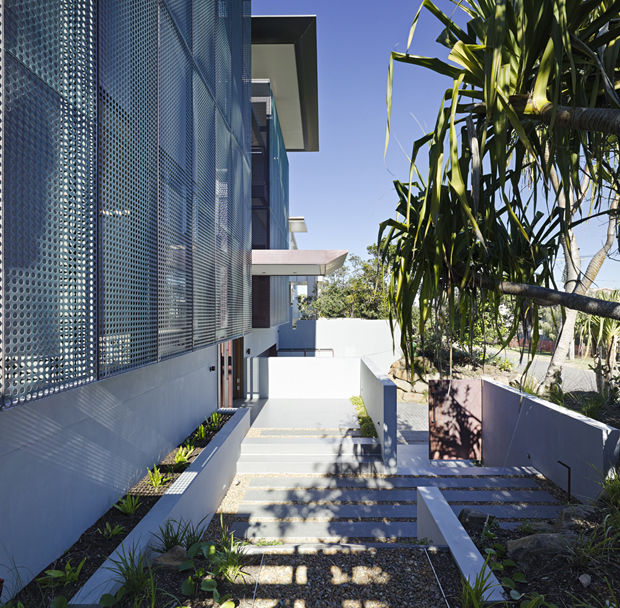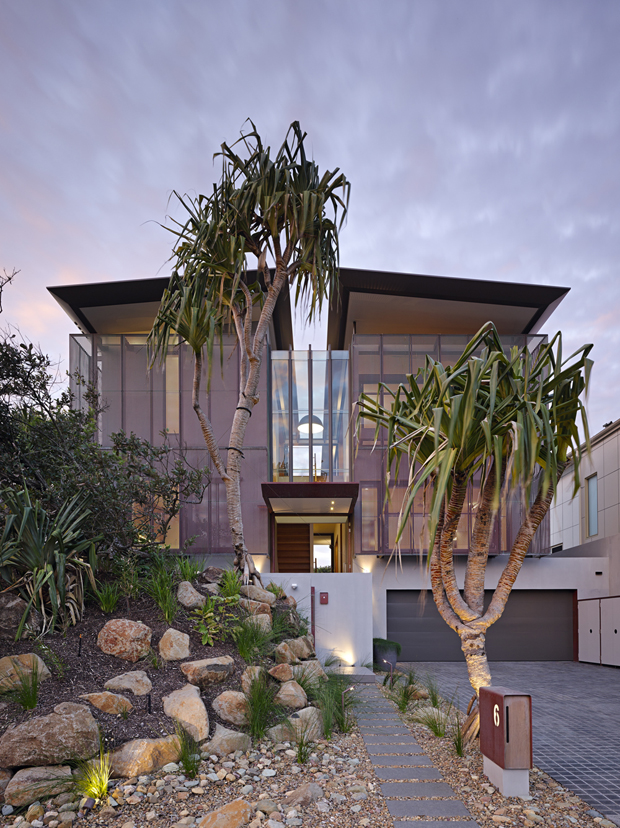Marc Conlon of Conlon Group wanted to prove that today’s modern sustainable design principles could be incorporated into even the most luxurious of homes in a harmonious and sensitive manner. The Peregian Beach House, located in the Sunshine Coast, embodies this philosophy.
Aesthetically, the brief aimed at producing a modern and contemporary landscape that reinforces the strong architectural elements of the house, while creating a seamless interaction between the indoor and outdoor functional lifestyle spaces.
The landscape of this holiday residence takes on the qualities of the local environment on a physiological level. Considered yet basic principles of revegetation, food protection, natural cooling and heating, and complete water infiltration, retention and use play a key part in the design strategy.
The planting of native and endemic flora, as well as use of existing soil and on-site composting, provide a diverse environment for native flora and fauna habitat development. In addition, locally sourced and recycled materials reduce the embodied energy.

However, the project did face some difficulties in terms of sustainability. This included the destructive storms and winds during establishment, bacterial growth affecting the existing native trees on site, and having to source for recycled, local and low embodied green materials. Native bush turkeys proved to be a challenge as well.
The use of natural heating and cooling, fresh water and power usage, coupled with on-site plant food production, has led to a ‘feel good factor’ that enriches the aims of this relaxing holiday retreat.

INITIATIVES
-
Conlon Group worked with the local council to facilitate the revegetation of the adjoining dune, which covered over 300m2 outside of the property. This included the removal of five large noxious tree species
-
The house has solar and water harvesting capabilities. Fresh water was used to create desirable plant establishment conditions whilst permanent backup systems were set up for the food production area and an internal native fern trellis. Solar energy powers the irrigation system and LED lighting throughout the gardens
-
On-site water retention and infiltration with timed release sub soil crystals provide advanced water conservation. Native and/or endemic plants do not require water during normal climatic conditions, so on-site water use is optional
-
No additional soil was imported and used. This was achieved through the thorough cleaning of the existing soil, and on-site mulching or composting of undesired trees prior to planting young, locally-grown native plants. Seeds were also locally collected
-
Recycled building practices were implemented on site, with the old, existing sandstone blocks on site reused to support retaining. Natural rock from the footing of the local development site and ex-ground native trees from development sites were also rescued for use
-
Plants were selected on the basis of type, location and quantity to minimize maintenance over the long term. Planting and materials were carefully selected and placed to provide an effective microclimate to reduce heat and water loss
Images: Christopher Frederick Jones

